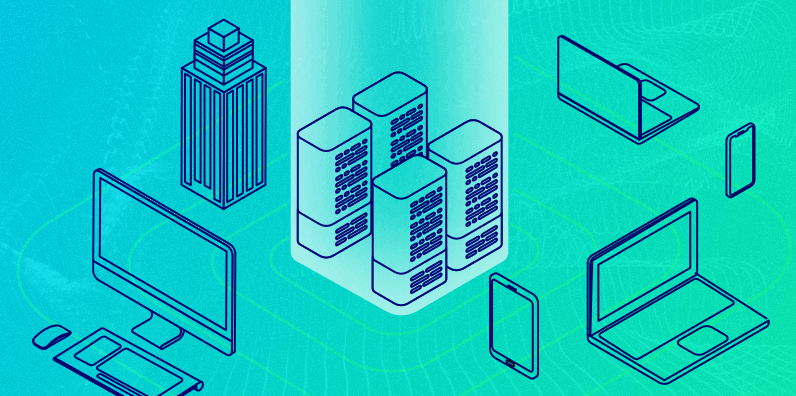
If you’re hip to IT, you know that the new trend on everyone’s list is edge computing. Edge computing is supposed to bring us greater speed, privacy, and more security than traditional cloud methods. That means building an edge data center has become a priority for just about everyone—but do you really know what that means? Don’t worry, it’s actually pretty easy to understand. In a nutshell, edge computing is an alternative to cloud computing where your data processing power is at the “edge” of your network.
That said, the “edge” part of an edge data center can mean different things to different industries. Edge computing is also a new application of technology, furthering the confusion on what it is, what it can do, and where it’s going. We’ll break it down for you here so you can make the decision on if your organization needs to move closer to the edge.
What is Edge computing?
Edge computing is a way to merge geographic distribution with cloud technology. An edge data center can help solve the problem of latency by being nearer geographically to the source of data that you need—basically running fewer processes from a cloud (where latency and security can be an issue) to more localized places. That can mean the user’s computer, an IoT (smart) device, or a data edge server.
It’s obvious how the first two options would speed up the process (by having more computations and data processing happen at the point where data is being received), but the last option is where we’ve seen important advancements, and why we’re so bullish on our Texas 2 Edge Data Center.
How does an edge data center work?
At its most basic an edge server works as a connection between two separated networks. That server will be closer to the requesting machine and located inside an internet exchange point to allow for traffic to flow freely and quickly between the networks. It basically will become a hub through which many devices in one network can request data from the other network.
An edge server is different from an origin server because of its proximity to the requesting client machine. Edge servers which cache content in localized areas can help to ease the burden off those servers. If you’re able to move things like JavaScript files, images, or html closer to the requesting machine—you’ll dramatically reduce the amount of time it takes for your resource to load. It doesn’t circumvent the need for an origin server, but it basically eases some of its heavy lifting.
Where do I place my edge data center?
For edge computing to work, your edge data center needs to be placed at an internet exchange point, a physical location where multiple network carriers all connect. Organizations are currently experimenting with different ways to implement this idea—they might deploy “micro data centers” which can be small enough to fit under a desk at your organization’s physical location or create dedicated edge data centers inside an IT closet or computing room, which is not ideal or scalable.
It seems though, that the best way to do this has been to find data centers at hubs located closest to your end users. That’s exactly what our Texas 2 Edge Data Center is designed for. If your end users are in Austin or San Antonio, you’ll see an increase in the efficiency of your IoT devices and could potentially reduce your network backbone transport costs.
Really? Yes, it’s that simple. See for yourself. Get a quick quote.
Our Texas 2 location is secure, with 16+ neutral carriers and redundant power to make sure that your end users get a consistent (and fast) experience 24x7x365. Edge data centers are the future of efficiency. We’d love to show you how we can help take your game up to the next level.
